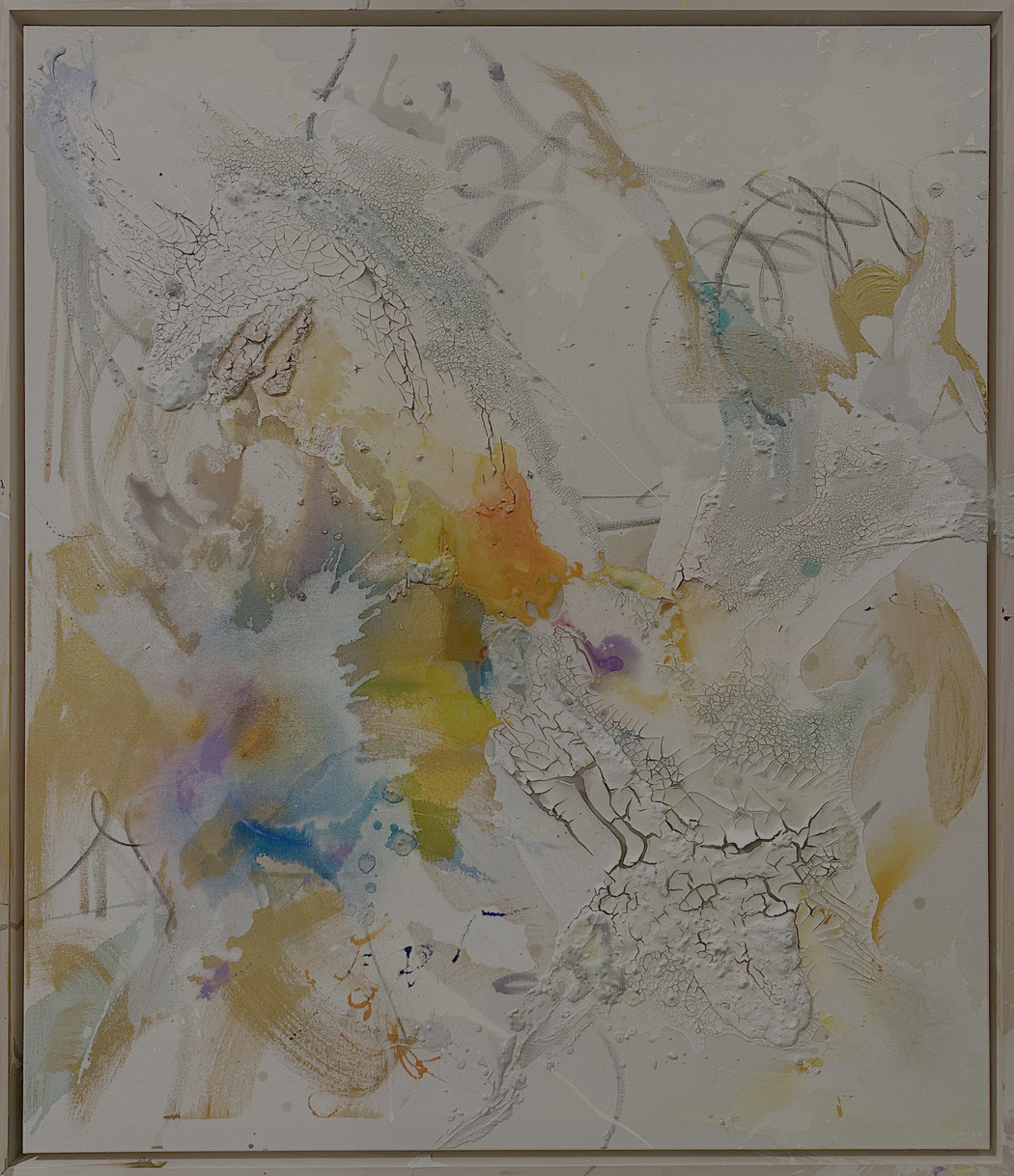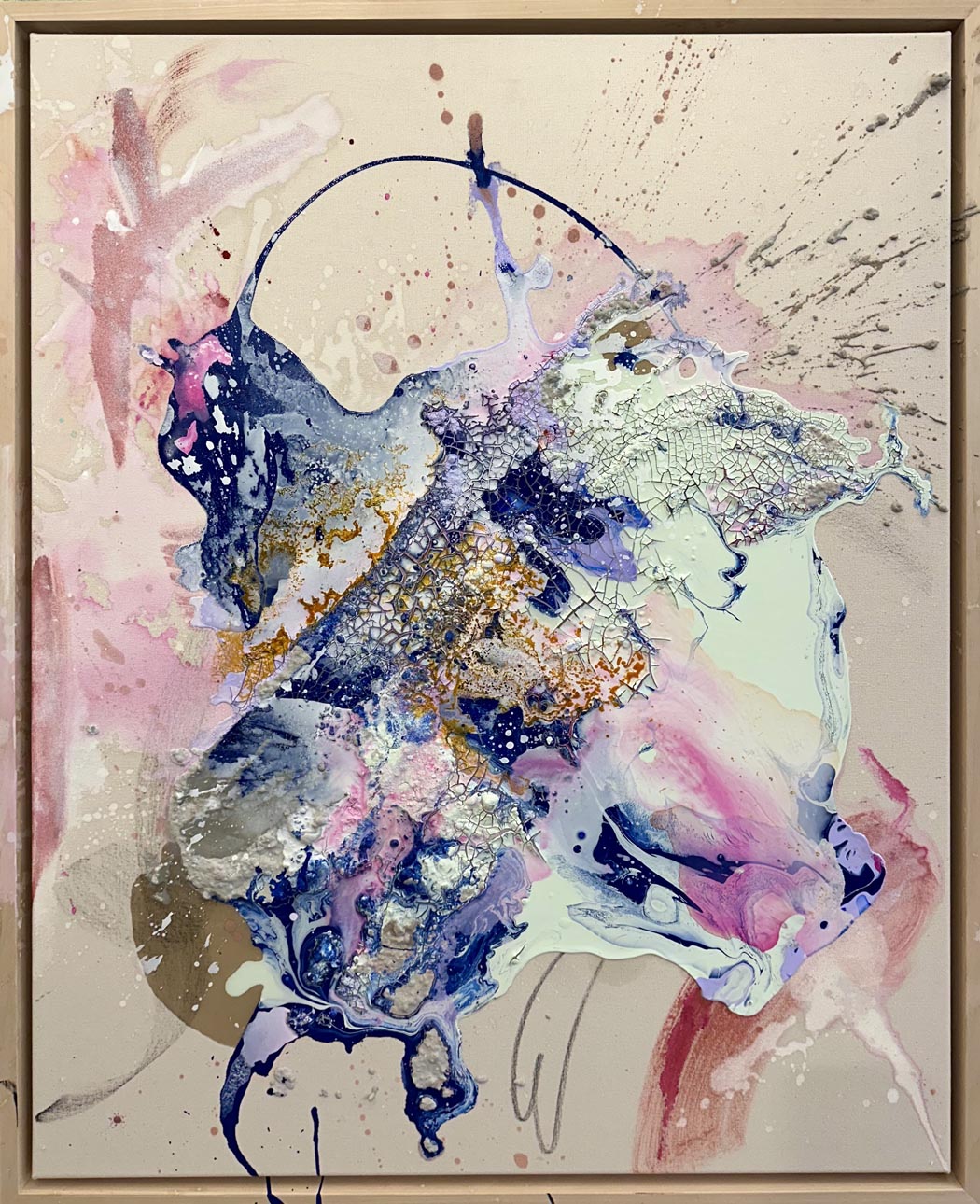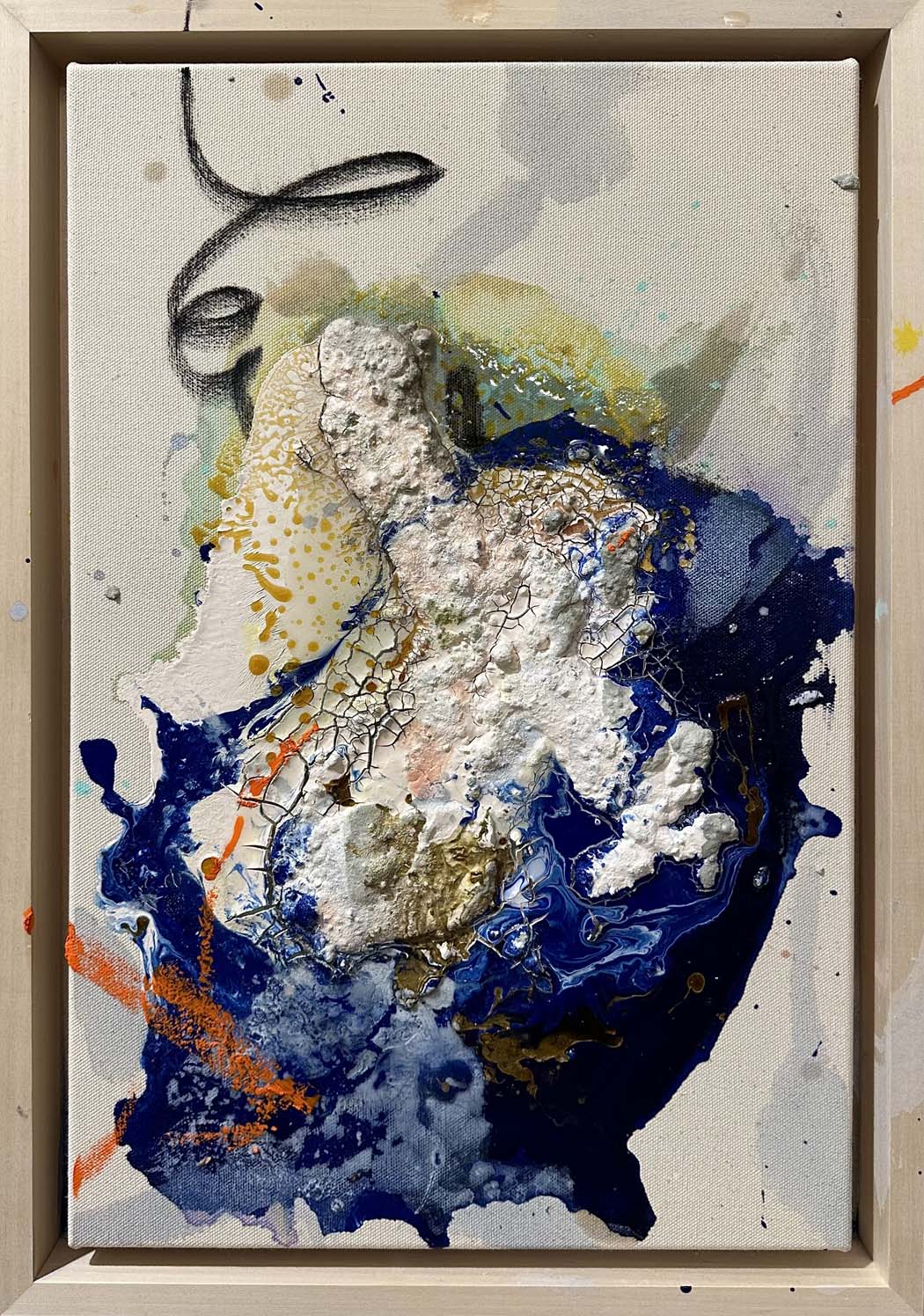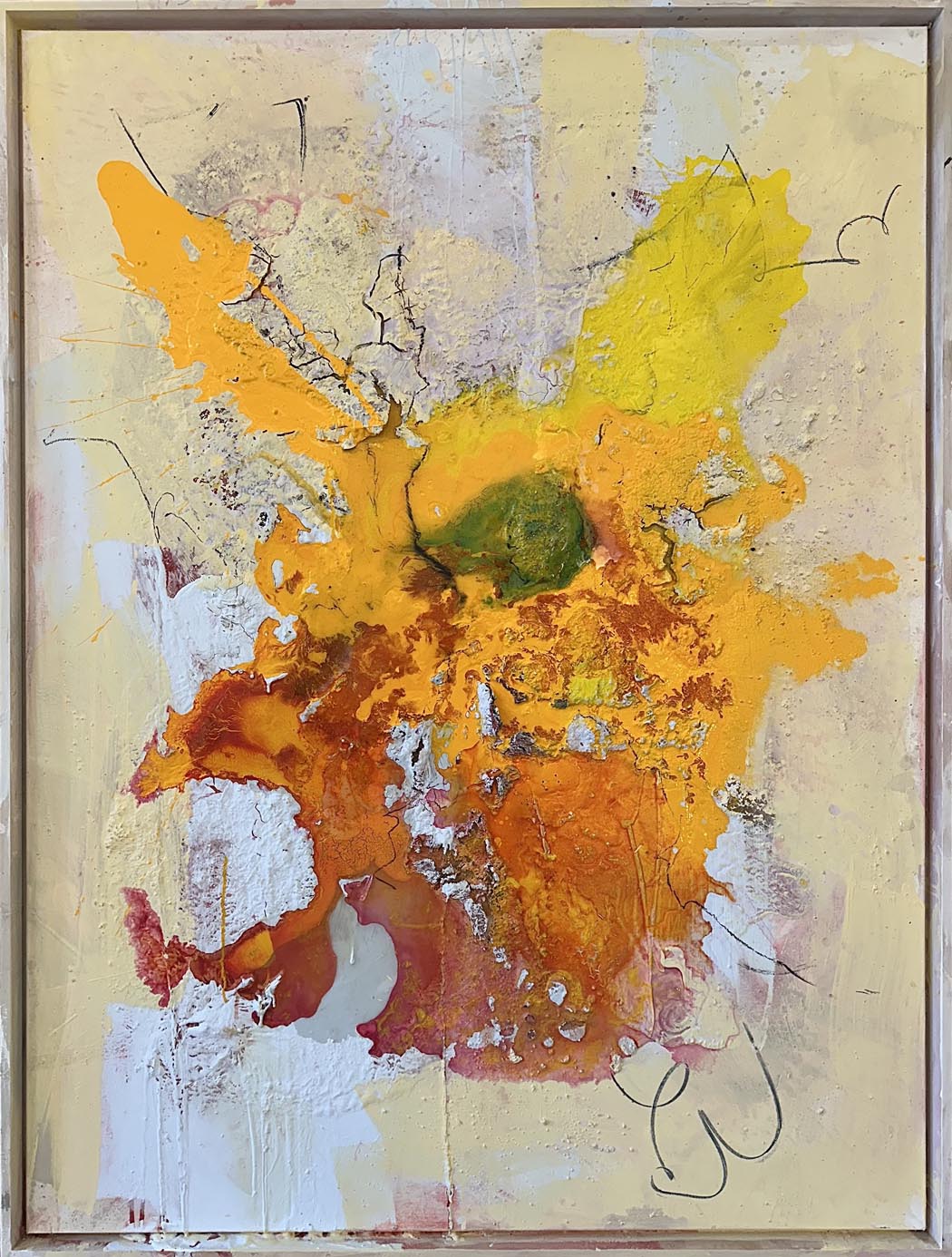Anna van den Hoevel
Your paintings often draw from bird’s-eye views of landscapes. What first inspired you to explore this unique perspective?
The bird’s-eye view has fascinated me for a long time because it diminishes the importance of the motif and reveals a larger whole. From above, buildings, objects and landscapes lose their dominance and become part of a broader structure. This distance allows me to highlight what truly matters: patterns, connections, fragments of memory. As someone who constantly documents her surroundings, I often feel like a tourist in my own life. The aerial perspective naturally reflects this way of seeing.
You combine traditional materials like acrylic with unconventional ones such as earth, mortar, and reused varnish. What role does material experimentation play in your creative process?
Material is not simply a tool for me, it is a partner. I enter into a dialogue with it, a back-and-forth that is expressive and emotional. Through layering, reacting and reworking, I create collages of pigment and matter that hold memories, emotions and traces of time. Natural materials like earth or mortar offer a depth and tactility that a purely visual image could never convey. I work with my hands and feet, so my physical presence and energy become part of the painting itself.
 Anna van den Hoevel | Atlanta II USA | 2025
Anna van den Hoevel | Atlanta II USA | 2025
Having lived between Munich, the Austrian Alps, and Menorca — how have these contrasting environments shaped your sense of color, texture, and light?
Growing up between mountain regions, urban environments and island life has shaped my visual language profoundly. This diversity sparked my fascination with both nature and the urban world. The places I’ve lived in or traveled through leave impressions that I photograph and later translate into painting. Mountains introduced me to earthy textures, cities to structure and density, and islands to a vibrant, breathing light. All of these influences merge into a process-driven palette where color and texture evolve naturally.
 Anna van den Hoevel | Los Angeles II USA | 2025
Anna van den Hoevel | Los Angeles II USA | 2025
Many of your works seem to hover between abstraction and topography. How do you balance emotional expression with geographical reference?
My work never begins from emptiness. Even on a white canvas, the first layer of soil or mortar already carries history, memory, energy. I work without a predetermined plan, allowing the painting to remain open and alive. Abstraction is not really my goal.It emerges from a process that shifts constantly between remembering, feeling and observing. Topographical elements enter through my habit of collecting photographic impressions, but during the painting process they dissolve and transform into emotional landscapes where inner and outer worlds coexist.
 Anna van den Hoevel | Santa Cruz II Usa | 2025
Anna van den Hoevel | Santa Cruz II Usa | 2025
Travel appears central to your practice. Can you share a place that profoundly influenced your recent series?
Mexico has had an important influence on my most recent series. I lived there earlier in my life and recently returned. Encountering a place that once felt familiar and now feels completely new has deeply moved me. The cultural richness of Mexico inspires me just as strongly as its landscapes. Its rituals, colors, symbols, stories, craftsmanship, and the layering of history and contemporary life—everything carries intensity and meaning.
Many of the impressions I’ve gathered there—visual, tactile, and atmospheric—now flow into my paintings as fragments of memory and material impulses.
The concept of the “sublime” is often associated with awe and transcendence. How do you interpret this idea through your own work?
For me, the sublime lies in the depth of perception. It emerges when I move beneath the visible surface to the point where emotions, memories, and tactile impressions merge. During the creative process, certain aspects reveal themselves unexpectedly, often carrying a dimension greater than the individual moment or place. The sublime arises from instinct, spontaneity and emotional intensity.
 Anna van den Hoevel | Vulcano Vesuvio Napoli, Italy | 2025
Anna van den Hoevel | Vulcano Vesuvio Napoli, Italy | 2025
Could you walk us through your typical creative process — from collecting visual references to completing a painting?
My process is intuitive and process-oriented. I collect photographs, impressions, soil, colors, and memories. The blank canvas is never an empty beginning. The first material layer already holds life. Through repeated layering, adding, destroying, and reworking, textures and color fields form naturally. In the later stages, I emphasize or disrupt areas to make emotional impulses more visible.
A painting is finished when it begins to speak with its own voice, when it no longer simply carries memory but becomes a memory in itself.


Leave a Reply